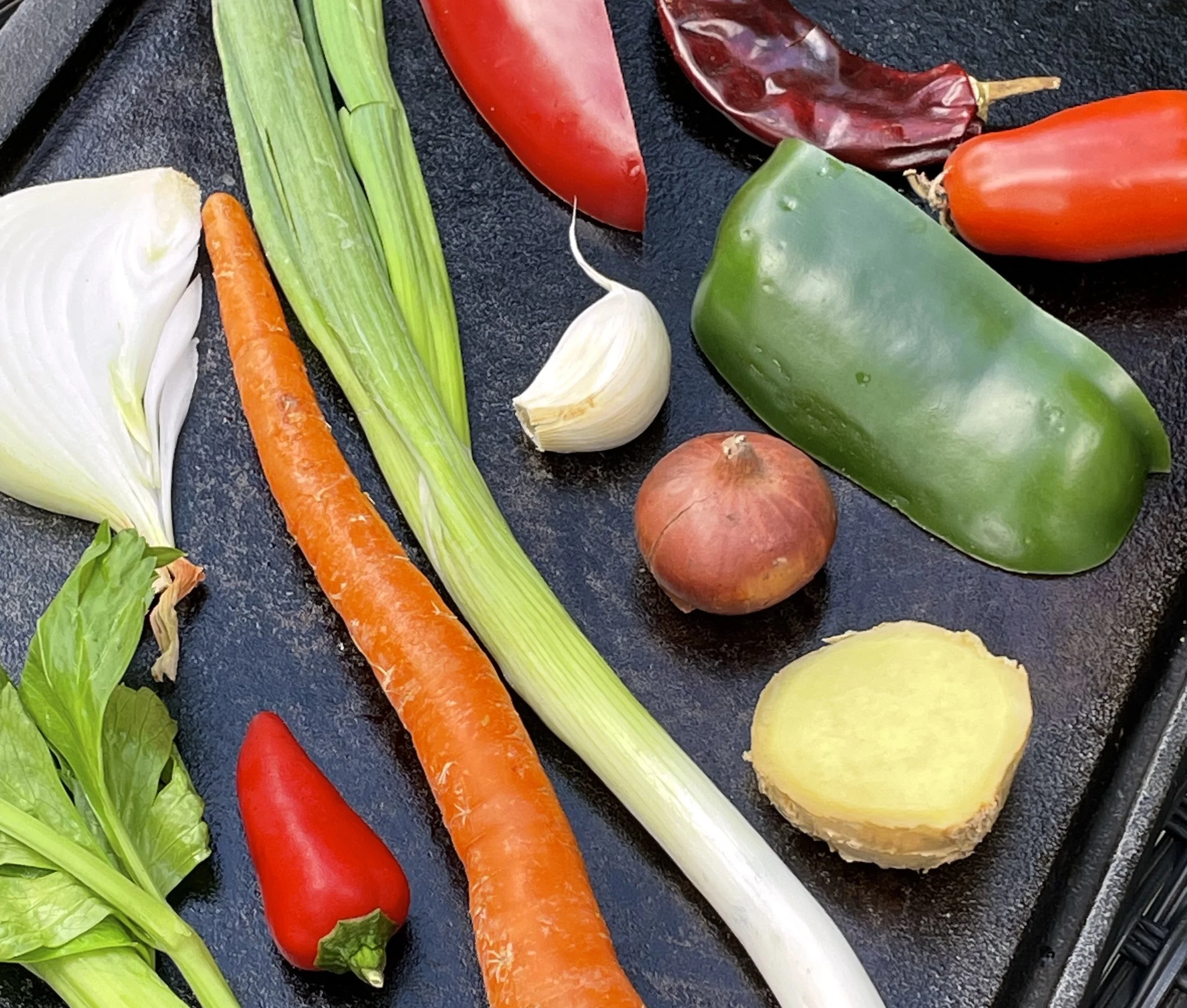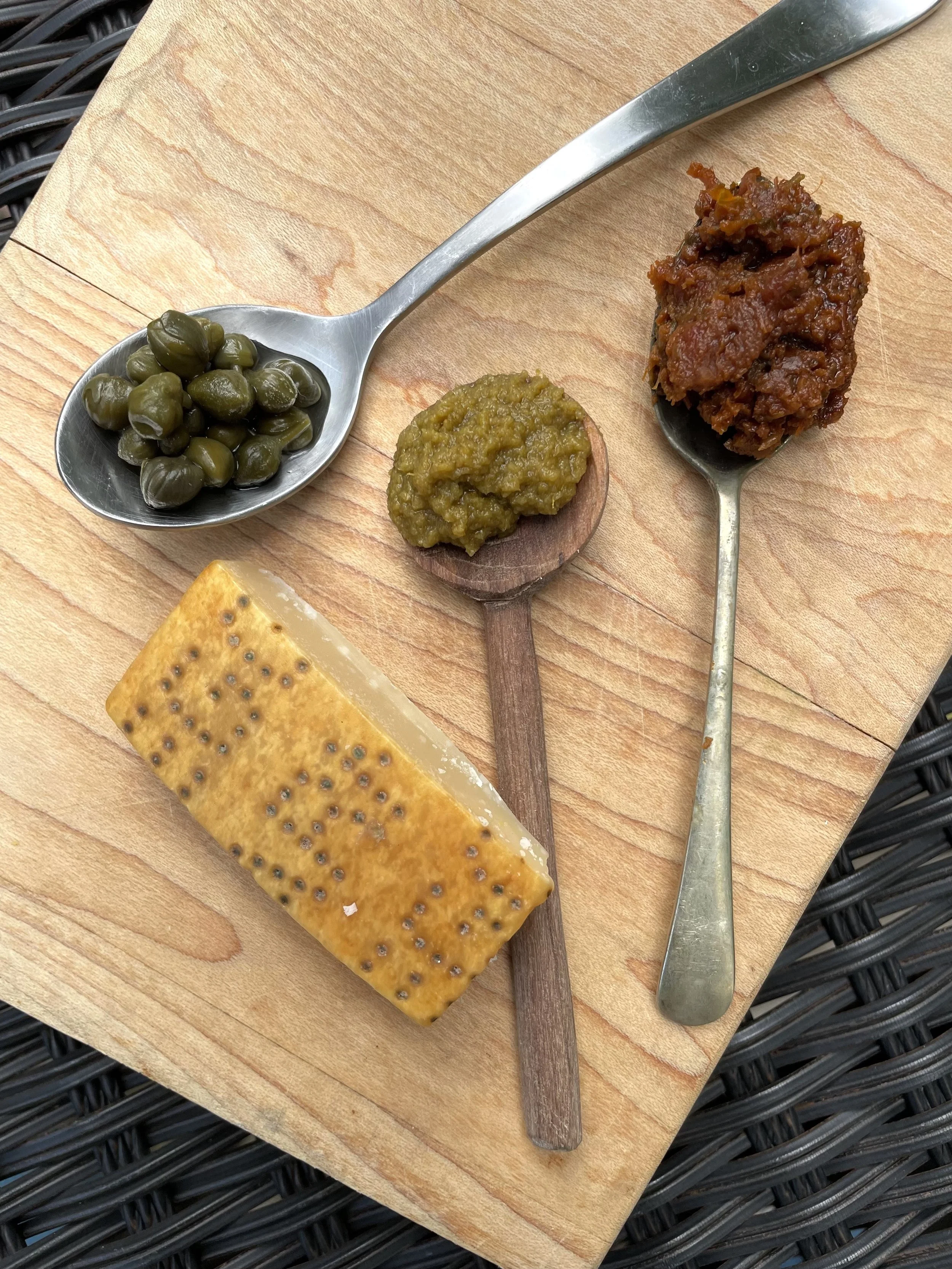A primer on aromatics: what they are and how to use them
Classic aromatic ingredients
The air today in Albany is cool, the rain is falling and it’s a sign, for sure, of weather to come. I welcome these grey skies and cooler temps with open arms and a soup pot that’s ready for steamy, flavorful broth.
I’m not ready yet for full-on pots of stew and eating dinner in slippers and stretchy pants (looking at you, February), but I’m eyeing up recipes that include flavorful sauces and fragrant caramelized onions. I’m thinking of broth and soft vegetables, of tender meat. This progression in cravings and cooking styles is as natural and inevitable as the changing of the leaves themselves. No amount of lamenting or pining for summer will change it. As we dip our toes into autumn vibes, our dinners, too, dip: into sauce, warmth, depth.
There’s a world of foods out there, so many creative ways to fill bellies. But no matter if you’re making a Moroccan tagine, chile-spiced tacos or good ol’ chicken soup, there’s one thing they all have in common: aromatics. Aromatics, in cooking, is defined as a combination of vegetables laced with herbs and other flavor-rich ingredients, and cooked in fat. It’s how you build flavor.
Without the time and care of properly cooking aromatics before building the rest of your dish, your food might lack depth and the kind of deliciousness that brings you back for a second bowl.
Below is a primer and an introduction to using aromatics in your food. It’s a good time to brush up on the techniques and fill your pantry with key ingredients. We’ve got five months of soup weather ahead and it’s best to be prepared.
I know that popular opinion around our area is that the warm fall days and the endless blue skies is a good, and to some, even a great thing. But give me a cold, rainy day — one that calls for my Dutch oven, a hunt through the spice rack, and the comforting scent of aromatics drifting through the kitchen. And then, one of my favorite wintertime sayings will kick off: full bowl, happy soul. With a few aromatics used just so, our bowls are as flavorful as they are comforting.
Alternative aromatics
What are Aromatics?
Aromatics are the flavors and layers of food between the hot oil in your pan and the spices, meats, vegetables, herbs and everything else that comes after. It’s the thing that adds flavor, aroma and personality to your dish. It’s the yum factor.
Why To Do It
When I think about the richest, most flavorful foods, I think of Thai curry, of French cassoulet, of birria from Mexico. Those foods all have vastly different ingredients and traditions, but they do have something in common: aromatics. At the heart of a complex dish is layers of flavor, and the first layer is the aromatics. It’s warmed fat with onions, cooked ‘til they’re soft and sweet. It’s garlic added to the onion. It’s chiles. It’s bay leaves and ginger and carrots. To me, the aromatics layer is not only about adding flavor but about taking the time to do it right. How much time? Cassoulet famously can take days to cook, if you’re following tradition. But we’re busy people and don’t have days. People are hungry for dinner, and soon! So allow the mirepoix, the holy trinity, the curry paste — or the whatever you’ve got in the pot — to simmer for a few minutes, before you add in the rest of the ingredients.
How to Cook Aromatics
Fat is the constant companion to aromatics. They are besties. No matter the ingredients or the place in the world you’re dreaming of being in while you cook up that pot of delicious food, you’ve got to warm it up and release the flavor and the aromas in a puddle of fat. The type of fat depends on your tastes and the manner in which you’re cooking. High heat cooking (like a stir fry) requires a high-smoke point oil, but with a sauté (like a sauce), you can use butter or olive oil.
Choose Your Fat
What kind of fat should you use to cook up those luscious layering ingredients? What you want in the end determines what goes in first. There’s butter and olive oil for gently simmering mirepoix, olive oil for sofrito. Indian curries often use ghee, a type of clarified butter and works well in high and prolonged heat. Basically, you want a fat that complements the ingredients of your aromatics. When in doubt, use a neutral, high heat oil, like canola or vegetable oil.
Mirepoix
Mirepoix is the mother of all aromatics. You can start with this flavor combination and make endless incarnations. Traditionally, mirepoix is made up of onion, carrot and celery, cut to the same size, and simmered in butter, slowly over low heat.
Sofrito
A traditional Spanish base for many dishes, this medley includes onion and garlic as well as tomato and peppers. I like to add something piquant to sofrito, like olives, as well as parsley. Sofrito makes a wonderful base for soups and stews. Cook these ingredients over a medium low flame in olive oil.
Holy Trinity
Cajun cooks and chefs made this combination a classic and it’s good know-how to keep in your cooking repertoire. Consisting of onion, bell pepper and celery, they are simmered until soft in vegetable oil. The holy trinity is the base of many classic Cajun dishes, including beans and rice and gumbo.
Indian
Indian curries have powerful fragrance and famously, tons of flavor. That flavor begins by warming onions (typically a white onion) and a paste made of ginger and garlic, in ghee. Those warmed aromatics are a cradle for the many spices layered in after that, creating complex and very savory stews.
Something Different You can think outside the (ice) box and use dried chiles, Parmesan rinds, capers, peppercorns, jarred roasted red peppers and cured meats in your aromatic layer. I have a friend who adds a chunk of pepperoni to the onions and garlic in her Italian Sunday sauce, making a piece of salty, fatty meat into part of her layers, before stirring in tomatoes. It’s irresistibly good.


